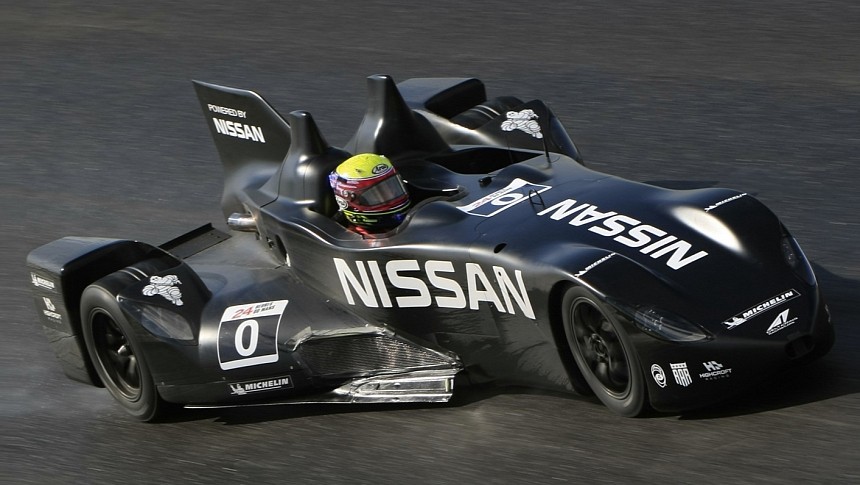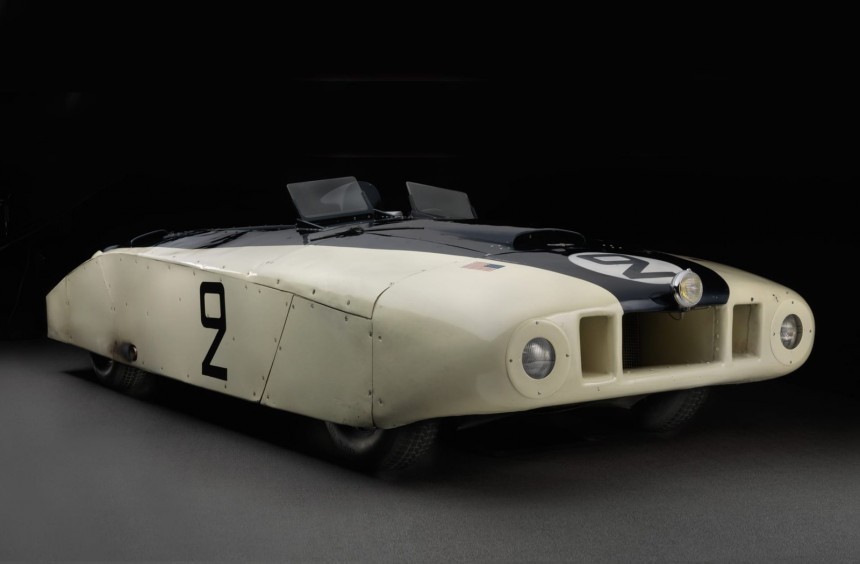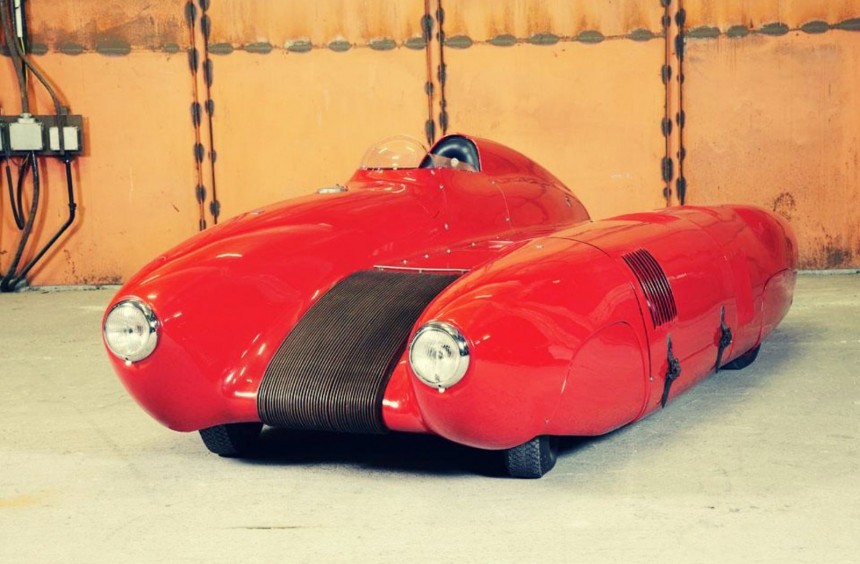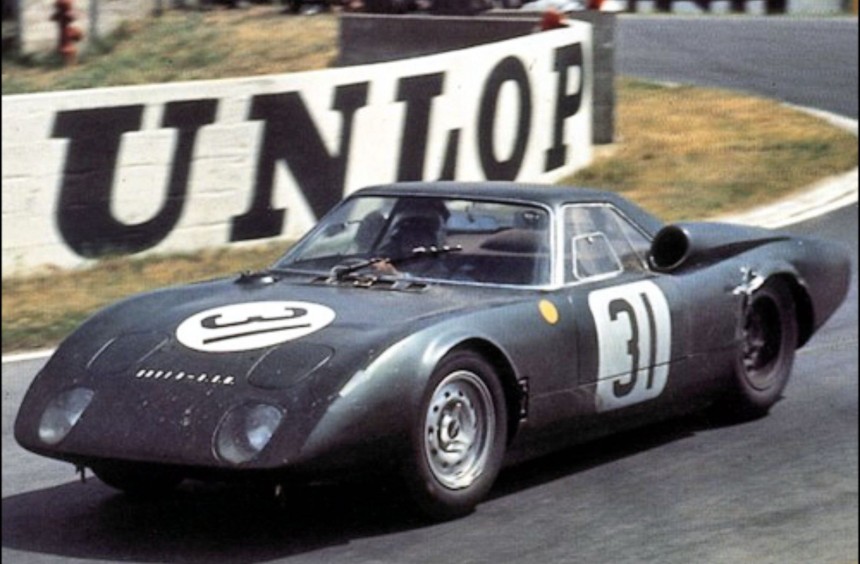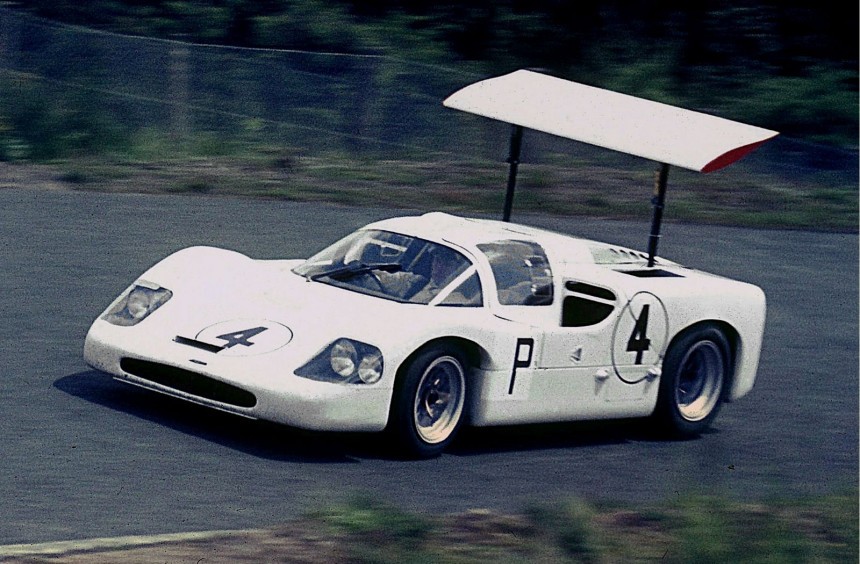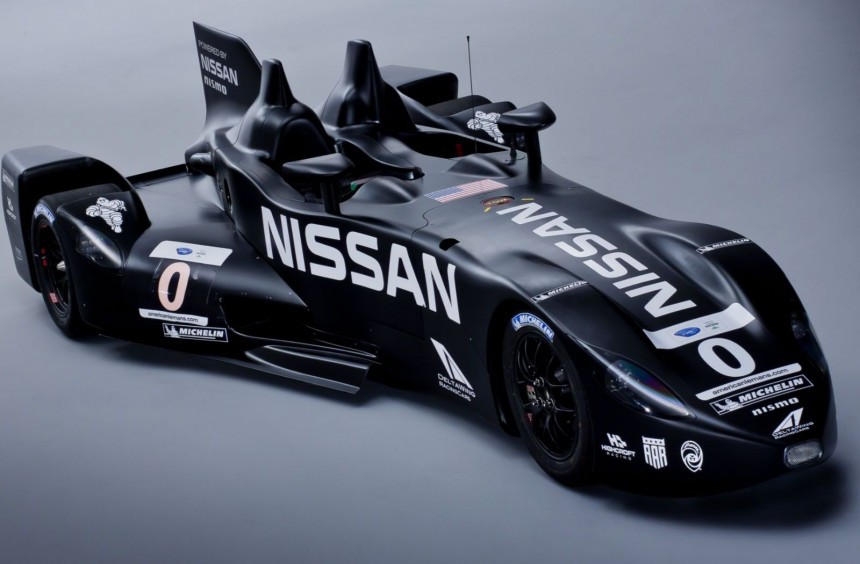To celebrate the 100th anniversary of the legendary 24 Hours of Le Mans, we'll remember five of the weirdest cars that ever competed.
Since the first edition held in 1923, the world's oldest, most prestigious endurance race has been a testbed for automotive innovations.
Whether they desperately wanted to win or just prove the viability of their ideas, the brightest minds in motorsport have continually introduced new designs and technologies at the Circuit de La Sarthe.
Many of these innovations caught on and influenced the evolution of race and road cars, while others gave birth to some weird yet wonderful cars that stood out from the rest.
The story goes that Cunningham's close friend and three-times Le Mans winner, Luigi Chinetti, challenged him to enter two American cars in the French race.
Chinetti went as far as obtaining an invite for his friend, who assembled a private team and decided to race a couple of Cadillac Series 61 coupes powered by the division's mighty 331-ci (5.4-liter) OHV V8. While the first car was more or less stock, the second received a completely wild body.
Back then, the Le Mans rulebook didn't allow competitors to swap the car's factory engines, but it gave them the freedom to basically rebody their vehicles. Therefore, to shed weight and improve aerodynamics, Cunningham recruited aeronautical engineer Howard Weinman who designed a new body. While it looked inspired by a tank, the new structure was developed using a wind tunnel meant for testing small aircraft fuselages.
Nicknamed "Le Monstre" (the monster) by the French crowd, the modified Caddy performed well at the 1950 race despite several drawbacks. Co-driven by Phil Walters and Briggs Cunningham himself, it finished 11th overall, ahead of much more prestigious sports cars such as the Jaguar XK120s.
If you're a fan of vintage Italian sports cars, Nardi is a familiar name. The company produced wooden steering wheels for a series of legendary cars, including the Ferrari 250 GTO.
But apart from exquisite steering wheels, Enrico Nardi, the man behind the company, also designed a series of wild vehicles based on Fiat chassis and powered by motorcycle engines.
By far the wildest and most famous of them all was the Nardi Bisiluro (twin torpedo, in Italian), also known as the Nardi 750 Bisiluro or Damolnar - an acronym for Damonte, Molino, and Nardi, the people behind the project.
Built on a Fiat 500 chassis, the four-wheeled oddity featured an asymmetric twin torpedo-like body with the cockpit on the right and a 55-hp, Giannini-tuned, 735cc BMW motorcycle four-cylinder engine hidden inside the left "torpedo."
The car started the 1955 Le Mans race as Ufficine Nardi's only factory entry, but it only lasted about an hour as an accident forced it to retire.
Despite its early exit, the Nardi Bisiluro went down in history as the weirdest car to ever compete in the legendary endurance race, a title it still holds nearly five decades later.
Although it was never as weird-looking as the other cars in this article, the Rover-BRM was unquestionably one of the most peculiar vehicles to ever race at Le Mans because it featured a jet engine.
Shortly after the Second World War ended, several carmakers started experimenting with gas-turbine technology, which proved its worth during the global conflict in the aircraft industry.
The first carmaker to build a functional, gas turbine-powered car was Rover, who introduced a prototype named JET1 in the spring of 1950. Over the next decade, the company developed several other, more advanced concept cars that utilized this technology. One of these cars ran a few demonstration laps before the start of the 1962 Le Mans race, and the crowd's positive reaction convinced the organizers to give Rover a shot at competing in the next edition.
Thus, Rover partnered with Formula 1 team British Racing Motors (BRM) and developed a gas turbine-powered racing prototype, which was entered in the 1963 Le Mans race as an experimental entry.
Rather uninspiringly named Rover-BRM, the jet car surprised everyone and finished the race ahead of the 7th-placed AC Cobra Hardtop, but since it was an experimental entry, the result didn't officially count.
With several improvements, the car returned to Le Mans in 1964 and 1965. While the 1964 adventure was cut short by mechanical issues, the jet-powered car finished the race tenth in 1965 and did so as an official entry in the 2-liter prototype class.
A Group 6 sports prototype designed by Jim Hall and Hap Sharp, the Chaparral 2F was not built exclusively for the Le Mans race, but targeted the 1965 World Sportscar Championship crown.
Built around a bespoke semi-monocoque chassis, it was powered by a 526-hp, 427-ci (7.0-liter) Chevy "Porcupine" big-block V8 mated to a three-speed automatic.
The 2F's fiberglass bodywork was, in many ways, an aerodynamic masterpiece, yet its boxy rear end and huge, high-rise rear spoiler made it look extremely goofy. However, the spoiler, which was controlled via an extra pedal inside the cockpit, made the race car one of the very first to use active aerodynamics.
While the aerodynamic innovations proved their worth and influenced future motorsport designs, the 2F was plagued by mechanical issues, and its season ended up being a disaster.
At the 1965 edition of Le Mans, Chaparral fielded two cars among the sea of Fords and Ferraris. Unfortunately, neither could cross the finish line, retiring with gearbox (car nr. 7) and electrical system failures (car nr. 8).
The most radical race car designs of the 21st century, the DeltaWing project started out as a proposal for IndyCar's next-gen chassis.
The brainchild of British race car designer and engineer Ben Bowlby, it was unveiled at the 2010 Chicago Auto Show, showcasing a new design principle that dramatically lowered weight, reduced drag, and improved fuel consumption, allowing it to perform like some of the most powerful race cars around while using a much smaller engine.
The idea drew a lot of interest, but the unconventional design didn't impress IndyCar officials, who ultimately decided to go with a new Dallara chassis.
Nevertheless, the team behind the project didn't give up. It partnered with Japanese giants Nissan, who delivered a bespoke, 1.6-liter turbocharged four-cylinder and decided to race at Le Mans in 2012 as an experimental, Garage 56 entry.
In France, it proved that it could hang with the big boys and showcased its impressive fuel efficiency. Unfortunately, it only survived 75 laps, having to retire because of an accident.
Whether they desperately wanted to win or just prove the viability of their ideas, the brightest minds in motorsport have continually introduced new designs and technologies at the Circuit de La Sarthe.
Many of these innovations caught on and influenced the evolution of race and road cars, while others gave birth to some weird yet wonderful cars that stood out from the rest.
Cadillac "Le Monstre"
For this year's edition, Cadillac is set to return to Le Mans with its state-of-the-art V-Series.R prototype. GM's luxury division debuted at the famed 24-hour race in 1950 thanks to American entrepreneur, driver, and team owner Briggs Cunningham.
The story goes that Cunningham's close friend and three-times Le Mans winner, Luigi Chinetti, challenged him to enter two American cars in the French race.
Chinetti went as far as obtaining an invite for his friend, who assembled a private team and decided to race a couple of Cadillac Series 61 coupes powered by the division's mighty 331-ci (5.4-liter) OHV V8. While the first car was more or less stock, the second received a completely wild body.
Back then, the Le Mans rulebook didn't allow competitors to swap the car's factory engines, but it gave them the freedom to basically rebody their vehicles. Therefore, to shed weight and improve aerodynamics, Cunningham recruited aeronautical engineer Howard Weinman who designed a new body. While it looked inspired by a tank, the new structure was developed using a wind tunnel meant for testing small aircraft fuselages.
Nicknamed "Le Monstre" (the monster) by the French crowd, the modified Caddy performed well at the 1950 race despite several drawbacks. Co-driven by Phil Walters and Briggs Cunningham himself, it finished 11th overall, ahead of much more prestigious sports cars such as the Jaguar XK120s.
Nardi Bisiluro
But apart from exquisite steering wheels, Enrico Nardi, the man behind the company, also designed a series of wild vehicles based on Fiat chassis and powered by motorcycle engines.
By far the wildest and most famous of them all was the Nardi Bisiluro (twin torpedo, in Italian), also known as the Nardi 750 Bisiluro or Damolnar - an acronym for Damonte, Molino, and Nardi, the people behind the project.
Built on a Fiat 500 chassis, the four-wheeled oddity featured an asymmetric twin torpedo-like body with the cockpit on the right and a 55-hp, Giannini-tuned, 735cc BMW motorcycle four-cylinder engine hidden inside the left "torpedo."
The car started the 1955 Le Mans race as Ufficine Nardi's only factory entry, but it only lasted about an hour as an accident forced it to retire.
Despite its early exit, the Nardi Bisiluro went down in history as the weirdest car to ever compete in the legendary endurance race, a title it still holds nearly five decades later.
Rover-BRM
Shortly after the Second World War ended, several carmakers started experimenting with gas-turbine technology, which proved its worth during the global conflict in the aircraft industry.
The first carmaker to build a functional, gas turbine-powered car was Rover, who introduced a prototype named JET1 in the spring of 1950. Over the next decade, the company developed several other, more advanced concept cars that utilized this technology. One of these cars ran a few demonstration laps before the start of the 1962 Le Mans race, and the crowd's positive reaction convinced the organizers to give Rover a shot at competing in the next edition.
Thus, Rover partnered with Formula 1 team British Racing Motors (BRM) and developed a gas turbine-powered racing prototype, which was entered in the 1963 Le Mans race as an experimental entry.
Rather uninspiringly named Rover-BRM, the jet car surprised everyone and finished the race ahead of the 7th-placed AC Cobra Hardtop, but since it was an experimental entry, the result didn't officially count.
With several improvements, the car returned to Le Mans in 1964 and 1965. While the 1964 adventure was cut short by mechanical issues, the jet-powered car finished the race tenth in 1965 and did so as an official entry in the 2-liter prototype class.
Chaparral 2F
Built around a bespoke semi-monocoque chassis, it was powered by a 526-hp, 427-ci (7.0-liter) Chevy "Porcupine" big-block V8 mated to a three-speed automatic.
The 2F's fiberglass bodywork was, in many ways, an aerodynamic masterpiece, yet its boxy rear end and huge, high-rise rear spoiler made it look extremely goofy. However, the spoiler, which was controlled via an extra pedal inside the cockpit, made the race car one of the very first to use active aerodynamics.
While the aerodynamic innovations proved their worth and influenced future motorsport designs, the 2F was plagued by mechanical issues, and its season ended up being a disaster.
At the 1965 edition of Le Mans, Chaparral fielded two cars among the sea of Fords and Ferraris. Unfortunately, neither could cross the finish line, retiring with gearbox (car nr. 7) and electrical system failures (car nr. 8).
DeltaWing
The brainchild of British race car designer and engineer Ben Bowlby, it was unveiled at the 2010 Chicago Auto Show, showcasing a new design principle that dramatically lowered weight, reduced drag, and improved fuel consumption, allowing it to perform like some of the most powerful race cars around while using a much smaller engine.
The idea drew a lot of interest, but the unconventional design didn't impress IndyCar officials, who ultimately decided to go with a new Dallara chassis.
Nevertheless, the team behind the project didn't give up. It partnered with Japanese giants Nissan, who delivered a bespoke, 1.6-liter turbocharged four-cylinder and decided to race at Le Mans in 2012 as an experimental, Garage 56 entry.
In France, it proved that it could hang with the big boys and showcased its impressive fuel efficiency. Unfortunately, it only survived 75 laps, having to retire because of an accident.
